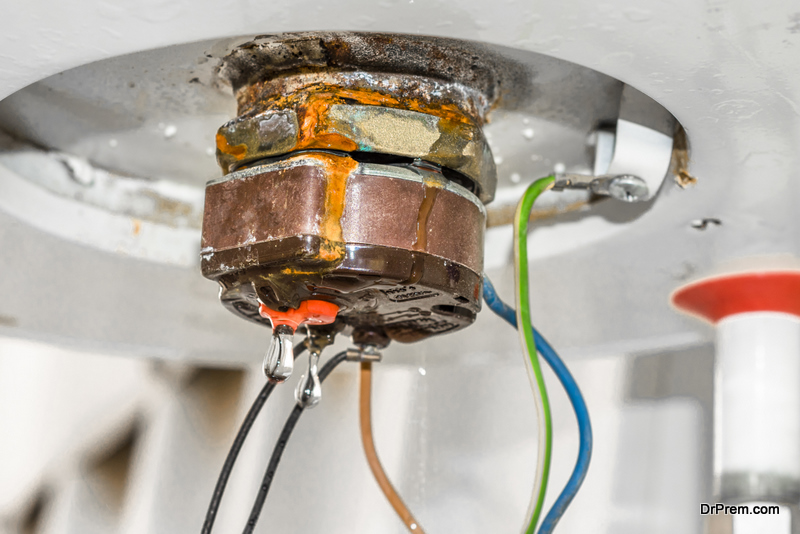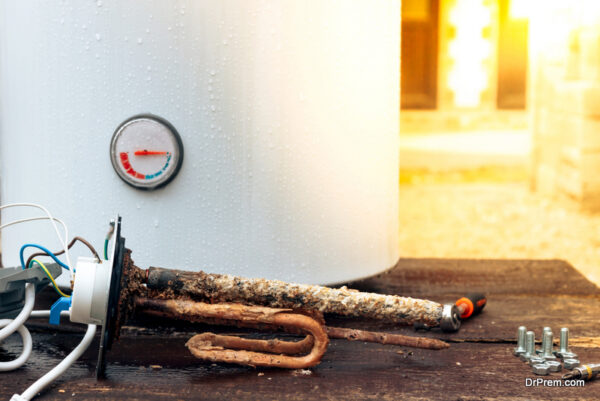Water heaters are a staple of most Canadian households. They heat water through a heat transfer process where an energy source raises the temperature of the water. This heated water is useful for various activities, including cooking, bathing, cleaning, and space heating. People rely on water heaters to fulfill their daily lifestyle needs. Thus, it is helpful to learn about how the entire system works. Water heaters are not overly complicated, but there are some things one needs to understand to maintain them properly. For the most part, one should understand and deal with any issues that arise. Still, it is always safer to call for help and reach out to professional technicians such as those at Smile HVAC.

To begin, we first need to look at the different types of water heaters. The conventional storage water heater is the most common type. In this system, the water heats up to a particular temperature. Then it is stored at that temperature in a tank until the homeowner turns on a tap. At this point, it can be used for the activities as mentioned earlier. These heaters can be further divided into electric and gas variants.
In a gas-powered water heater, the cold water flows into the tank via a dip tube. A gas burner heats the water. The burning gas produces scorching but toxic air. The air flows through a chimney, which is in the middle of the heater tank. The chimney separates the toxic air, which is released outside, while the metal chimney gets heated by the air. The surrounding water also starts heating up due to its contact with the metal chimney. Heat flows from high concentration to low concentration, so the heat in this system transfers from the hot metal to the cold water. Eventually, the water will heat up as the metal cools down.
Heat always rises, so as the water heats up, the heater uses this phenomenon to push the warm water through the plumbing system. The warm water rises to the top of the heater tank and makes its way across the building via the heat-out pipe. When one turns on the faucet for hot water, cold water is pushed through the dip tube, and it displaces the hot water by guiding it through the whole system and releasing it via the heat-out pipe. The heater’s temperature can also be adjusted and set at a particular setting by using the thermostat on the device, which is connected to the gas line. It brings the right amount of gas to the burner to reach said temperature.
Lastly, these heaters have protective measures, such as the temperature and pressure relief valve (T&P valve). These open and release water if the temperature is too hot or the pressure builds up inside the tank to a dangerous level, preventing any potential explosions. Water heaters also have a drain valve on the tank’s side, which helps drain the heater to reduce sediment build-up.
An electric water heater works in a nearly identical manner. However, the water is heated by electric elements and is plugged into a power supply.

Water heaters can encounter some common problems. A homeowner should do regular maintenance for the heater to avoid these issues.
- Issue: Water temperature is not hot enough.
- Solution: Set the thermostat on the heater to a safe temperature.
- Issue: Water heater makes noise or stops working.
- Solution: Check for and flush our sediment from the tank annually.
- Issue: Water comes out with a yellow/brown tint.
- Solution: Check and change the anode rod, which keeps the tank from rusting. Rusting and corrosion can lead to the off-color water.
- Issue: Water leaking.
- Solution: Check the T&P valve by placing a bucket under the overhead pipe, opening the valve, and flushing it clear of debris.
Despite good maintenance, sometimes a water heater needs to be troubleshot to fix or find the issues. Troubleshooting is a simple process that can be done at home. If the heater does not produce any hot water, it may not be getting power. First, one should check that the heater is connected to a power source and that the circuit breaker hasn’t tripped. If it has tripped, then switch it off and then switch it back on again. If it hasn’t, then one needs to try and reset the high-temperature limit on the heater. To do this, follow these steps:
- Turn off the breaker for the water heater’s circuit.
- Remove the access panel for the upper heating element on the water heater.
- Remove the insulation and plastic safety guard, and be careful not to touch any electrical terminals.
- Press the red button (high-temperature cut off reset button) located above the thermostat.
- Replace the safety guard, insulation, and access panel.
- Turn on the heater’s circuit breaker.
These steps should ensure that hot water flows again. However, if it doesn’t, each heating element might need to be tested and potentially replaced if they appear to be malfunctioning.
In conclusion, a water heater is a relatively simple system essential in most people’s daily lifestyle. It works on the concept of a heat transfer process and can be gas-powered or electric. With good maintenance, one should avoid most problems, but they are relatively easy to fix if they arise. There will be some instances when one cannot fix the issues individually, and this could be because the heater or some part of it is broken. As mentioned before, it is always safer to ask for a professional’s assistance in such a case.
Article Submitted By Community Writer




